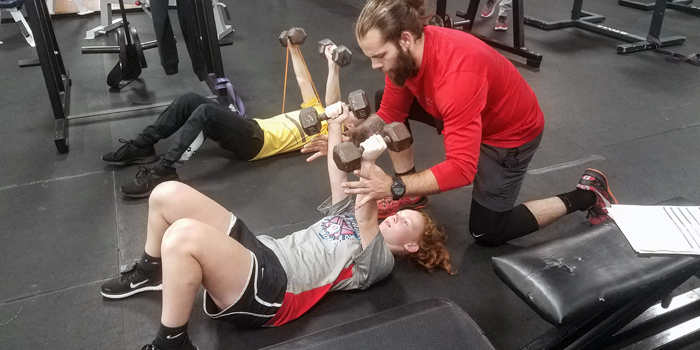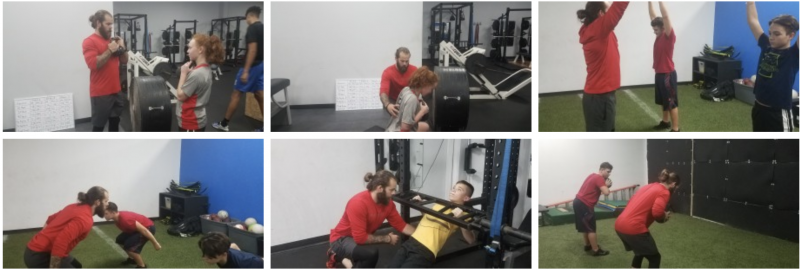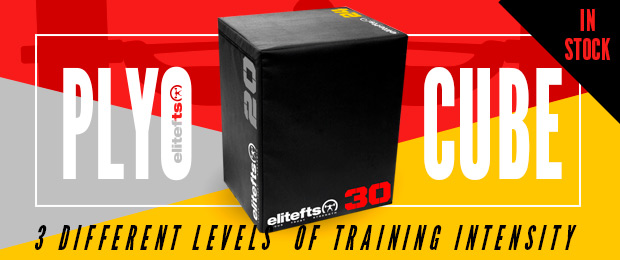
Working with youth athletes ages 14 and younger can be one of the most rewarding things as a strength and conditioning coach. More than likely you are going to be the first person to introduce these young boys and girls to strength training, and your guidance has the ability to build them a physical and mental foundation that will stay with them for the rest of their lives. With that being said, it can be one of the most stressful jobs you ever do in your coaching career.
We constantly are hearing what’s right and wrong from others in the industry and in the media regarding the dangers of weightlifting and children. We have parents approaching us regularly about these dangers with the discussion of disrupting growth plates and leading to catastrophic life-long issues — all reasonable fears, I may add. It is our job to best educate the parents and the kids on the importance and benefits of a structured, appropriate strength training plan.
WATCH: Matt Rhodes' Problems with Sports Coaches
Whenever parents ask the question of what an appropriate age is for their child to begin strength training, we need to examine what the child is currently doing. If their child is already participating in organized sports, then the physical stressors on their body from that sport are already high. The physical demands sports can bring to a young athlete (i.e., sprinting, jumping, diving, decelerating, throwing, kicking, etc.) are already far greater than anything they will see in an appropriate strength training program. Strength training is a responsibility to ensure that the child is fully prepared for the physical demands of that sport.
Another often-ignored benefit of strength training for children is the confidence that it gives to these young boys and girls. When you give the child the ability to achieve things in their own body that they once thought was not possible, it gives them confidence and raises their self-esteem to levels that they’ve never had before. Strength off of the field is just as important as strength on the field.
“Appropriate” is the keyword of everything previously mentioned. What may be appropriate for one child may not be for the next. This is something that needs to be decided through a proper evaluation of the child and decided by upon a trained professional. An appropriate strength training program is not a danger for youth athletes.

When training youth athletes, the focus needs to be on the competency of basic fundamental movement patterns. Yes, there should be a great focus on the development of the squat, press, pull, and hinge patterns, while not leaving out other often-neglected movements such as single leg work, various carries, jumps, throws, and crawls. Including these into the athlete’s program can help build a more well-rounded, better physically and mentally prepared athlete.
Listed below are some exercise examples to fit within each movement pattern. These are just examples and can be modified to be most appropriate for your athlete.
Squat Pattern
- Bodyweight Box Squat
- Bodyweight Free Squat
- Dumbbell Goblet Box Squat
- Dumbbell Goblet Free Squat
- Infant Squat
- Vary the stance: wide stance and close stance
Press Pattern
- Push-Ups: go from knees or body elevated on barbell if necessary
- Dumbbell Floor Press
- Dumbbell Bench Press
- Standing Banded Press: Double and Single-Arm
Pull Pattern
- Dumbbell Chest-Supported Row
- Inverted Row: use various grips: overhand, underhand, neutral
- Banded Row
- Banded Facepull
- Chins-Ups or Flex Arm Hang
Hinge Pattern
- Banded Pull-through
- Banded Romanian Deadlift
- Dumbbell Romanian Deadlift
- Kettlebell/Dumbbell Deadlift: weight off the box if needed
Single-Leg Patterns
- Step Up
- Split Squat
- Reverse Lunge
- Single-Leg Box Squat
Carries
- Farmers Carry
- Single-Arm Farmers Carry
- Overhead Carry
- Uneven Carry (1 farmer position, 1 overhead position)
Throws
- Medicine Ball Overhead Throw
- Medicine Ball Overhead Granny Throw
- Medicine Ball Chest Pass
- Medicine Ball Rotational Throw
Crawls
- Forward/Backward Bear Crawls
- Lateral Bear Crawls
- Spiderman Crawls
- Crab Walks
Jumps
- Box Jumps
- Lateral Box Jumps
- Squat Jumps
- Broad Jump
- Seated Box Jumps
- Lateral Bounds
The listed movements above must be taken into context, as they are just examples, and each and every movement listed can be dangerous if the athlete has not built up the ability to accomplish the task.
When progressing exercises, weight should not be the first line of progression. Instead, altering the rep range or tempo can create a more challenging movement for the athlete, but also remain safe and keep the athlete with appropriate load.
For example, a goblet squat with a five-second pause at the bottom is a far greater challenge compared to a normal tempo goblet squat even if the same load was used for each movement.
READ MORE: 6 Keys to Starting A High School Strength Program
The use of isometric holds in a youth athlete program can be a tremendously powerful tool. They help build great isometric and foundational strength for the athlete, teaching them how to squeeze and engage the proper muscles, but they also can be made into a competition for the kids to push themselves against one another and themselves.
If you’ve ever worked with youth athletes before or have kids yourself, then you know that their attention span can vary, so you want to make sure that you keep it fun and engaging. Still, be sure to give them what they need to better develop, a task easier said than done. You don’t want to change the movements too often, as this time is crucial for them to learn proper techniques. Altering small things of a movement, such as hand or foot position, or creating a challenge or game setting can make a dramatic difference to a youth athlete.
Far too often strength training for youth athletes is neglected and receives a bad reputation when in actuality, this is one of the most important times for an athlete or any individual to begin strength training.
We just need to ensure as professionals that youth athletes are on an appropriate plan with appropriate exercises selected to help teach them the fundamental movement patterns and give them a strong base for their future selves to build upon.
Brandon Holder is a sports performance coach at FASST Sports Performance in Winchester, Virginia. He works with athletes of all ages and levels, ranging from nine-year-olds to Division I athletes. Along with that, he is the assistant strength and conditioning coach at Shenandoah University. Prior to FASST, Brandon was an assistant strength and conditioning coach at Bridgewater College, where he worked with more than 20 sports. He obtained his bachelor's degree in health and exercise science from Bridgewater College and holds CSCS, USAW, and FMS certifications as well.










